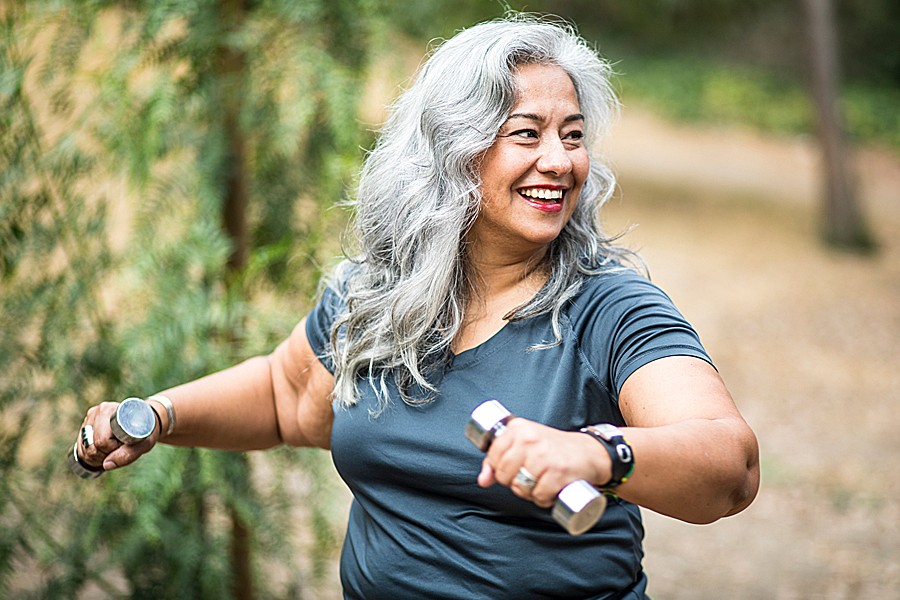Americans are spending more time sitting—at work and school or in front of a screen—than ever before. And being less active can increase our risk for many medical disorders such as heart disease and stroke. The American Heart Association has designated April as Move More Month and is encouraging Americans to be more physically active.
Physical activity is an important part of staying healthy. Regular exercise can help you maintain weight, breathe easier, strengthen your heart, maintain posture and flexibility, reduce your risk for many diseases, and help reduce stress.
There are many types of physical activity. Aerobic exercises work out your entire body, strengthen your heart and lungs, and improve endurance. Current recommendations are 150 minutes of moderate or 75 minutes of vigorous aerobic physical activity a week. That's only about 22 minutes a day.
Moderate aerobic activities include brisk walking, dancing, tennis doubles, gardening, and swimming; the intensity of these would be 5 or 6 out of 10. Vigorous ones—the kind where you're sweating profusely and can't hold a conversation or sing—would include running, aerobics, cycling faster than 10 mph, soccer, and hockey.
Strength training (push-ups, sit-ups, weight lifting) improves muscle function and tone, while exercises such as yoga, stretching, and Pilates improve flexibility and stability. It is recommended that you perform both strength training and flexibility exercises two to three times a week. Doing a variety of exercises will give you the biggest benefit.
You don't have to do all your physical activity at once. If finding one long period of time is difficult, break up your exercise into small increments. Aim for bouts of at least 10 minutes in length to get your heart rate up. Schedule time in your day solely for exercise, and don't skip it. Make exercise a priority.
Start any routine gradually, increasing as you can. Getting fit with physical activity is a marathon, not a sprint.
Even small changes can make a difference. Want to sneak in some exercise? Go for a walk after a meal. Take the stairs. Park your car farther from your destination. Get off the bus one stop early. Walk during your lunch break. Lift desk weights while at work. Sit on an exercise ball. Stand instead of sit. Dance to a few songs. Jog in place while watching TV. Do push-ups during commercials.
Remember to check with your doctor before starting any new physical activity. The last thing anyone wants is to get hurt trying to be healthier.
More exercise information is available on the American Heart Association website.
Posted in Health+Well-Being
Tagged hr newswire








